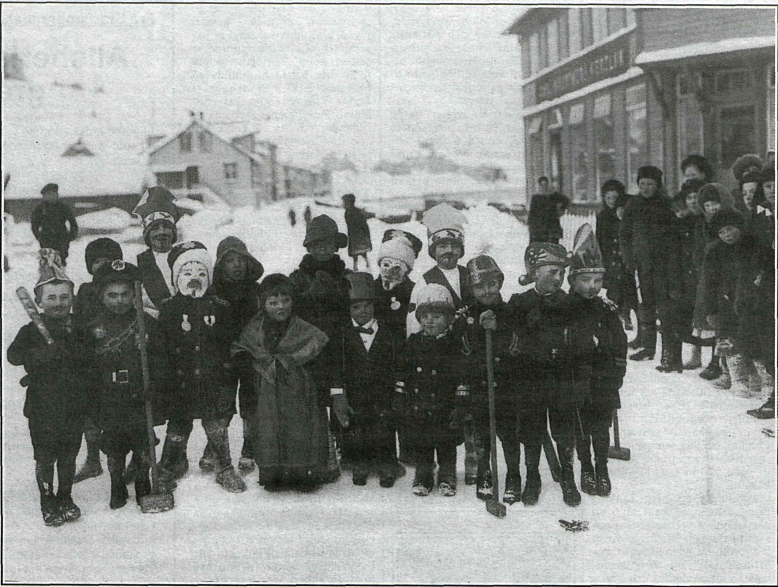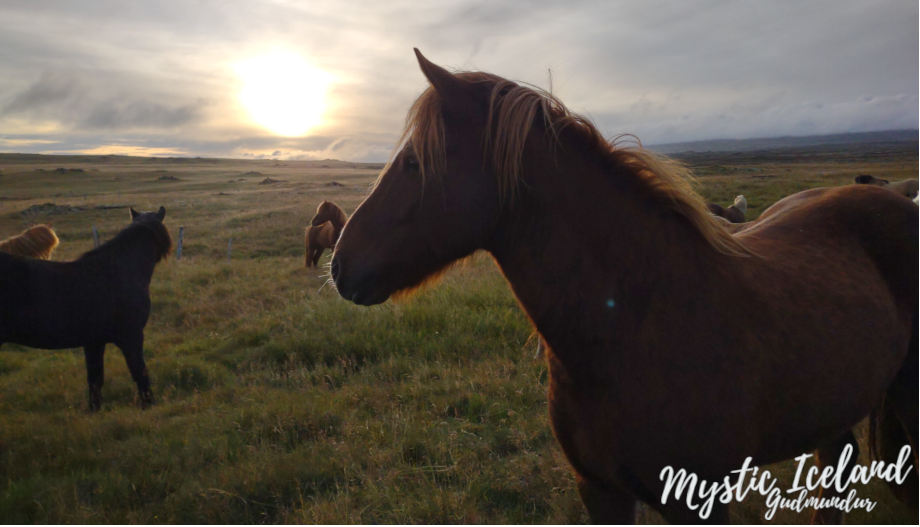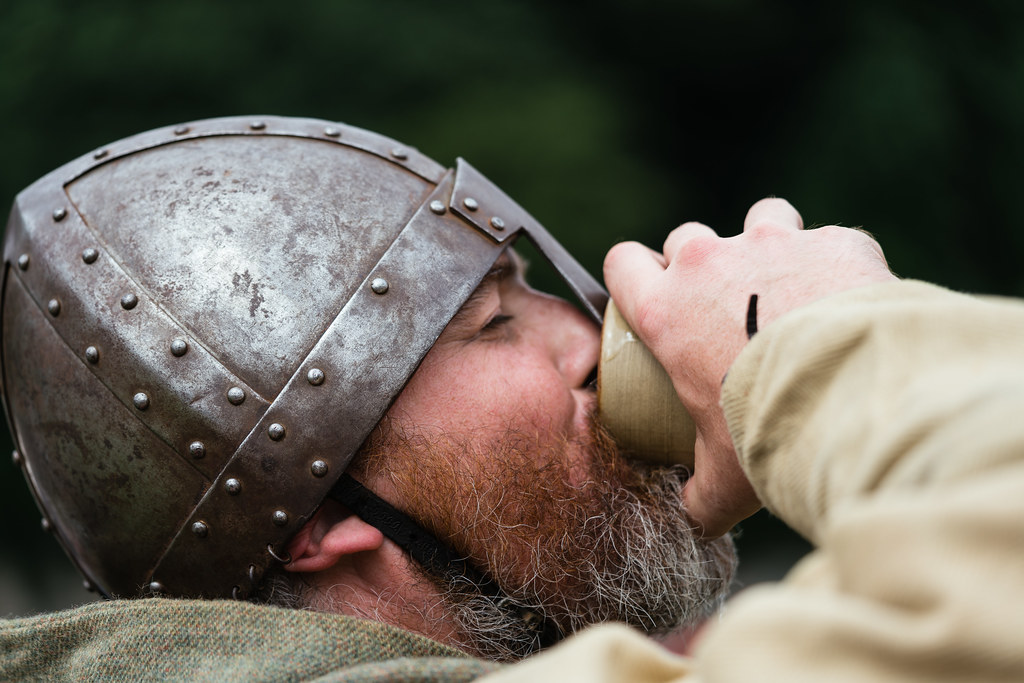People eagerly await the arrival of Shrovetide. It is a time of celebration all around the world, passed down through generations, with roots in Christian and Roman Catholic traditions.
In the small and the snowy country of Iceland, people prepare for the festivities that lay ahead. In homes across the country, family members of all ages are busy baking the traditional Icelandic pastry known as “bolla”. These cream-filled buns are a staple of Shrovetide, and everyone looks forward to indulging in the sweet and satisfying treat.
Bolludagur (Shrove Sunday/Monday)
Bun Day advertisement by Hagkaup in Fréttablaðið by Timarit.is licensed under CC PDM 1.0
Seven weeks before Easter, on the day formerly known as Flengingardagur or Whipping Day, people of all ages prepare for the upcoming symbolic 40-day fast by indulging in a sweet treat – the “bolla”. These cream-filled buns are a staple of Bolludagur and are eagerly awaited by all.
But Bolludagur wasn’t just about the buns. It was also a day of playful tradition and community spirit. As preparations began, adults and bakers busily prepared the buns, while children decorated their whipping wands in anticipation of the festivities to come.
As the day progresses, the sweet aroma of freshly baked buns fill the air, and children eagerly brandish their beautifully decorated wands. As tradition dictates, they playfully “whip” their friends and family, all in good fun and with no ill will intended.
The “bolla” also known as “fastelavnsbolle” are a hallmark of Bolludagur, have their roots in Denmark where the celebration is known as Fastelavn.
In the town of Ísafjörður Fastelavn is also called “Mask Day” (maskadagur). During this festive day, the children dress up in costumes and go from door to door, spreading the joy and cheer with their lively singing and happy faces. They are rewarded with treats and sweets from their neighbors as a sign of goodwill and community spirit.
Bolla recipe mmm…
Þóra Jónsdóttir from Möðruvellir was the granddaughter of Jón Jónsson the Learned. In her recipe book published in 1858, she shared the first-ever Icelandic Bolla recipe and called them langaföstusnúðar (Lent buns). Through her cookbook, she played a significant role in preserving this traditional Icelandic treat.
The first recorded mention of Bolludagur was in the Icelandic newspaper Þjóðólfur on Feb. 18th, 1910 by a Jón Jónsson from Bráðræðisholt. He had just received free tickets to see the play called The New Convert (Sinnaskifti in Icelandic) by the infamous Russian revolutionary (and assassin), Sergius (Kravchinsky) Stepniak. Other ticket holders were some of the most prominent men in the Experimental Society (spiritist society) (blog posts), who also held high positions in Iceland’s political game. The society’s two mediums at the time, Indriði Indriðason and Guðmundur Kamban, were there.

Fortunately for Jón, it was Bolludagur (Bun Day). While he anxiously waited for the performance to start, which was playing at Iðnó by the pond, he stopped by a place which by some was called Letigarðurinn (possibly the old prison which today is the PM’s office). With a lot of time to kill, he sat down and drank several cups of coffee and ate so many cream-filled buns that he couldn’t count them when writing about it in the newspaper.
Bolla recipe
Makes 15 buns
2 dl (.8 Cups) water
100 g (.5 Cups) butter
2 dl (.8 Cups) flour
1/4 tsp. salt
3 eggs
Filling:
Whipped cream, jam and glaze
- Boil water and butter in a pot until the butter is melted. Mix flour and salt into the pot. Stir well until the dough in the pot slides out and forms into a ball.
- Remove the pot from the stove, put the dough into a bowl and cool slightly.
- When the dough has reach room temperature add eggs one at a time while stirring carefully.
- Put parchment paper on an oven tray.
- Put the dough into a frosting bag (with a large opening) and squeeze the dough on the tray, evenly spaced.
- Bake at 200 °C (392 °F) for 20 minutes. Do not open the oven the first 15 minutes.
- Allow the buns to cool completely before adding filling and/or glaze.
- Heat on ovens can vary greatly. If the buns appear to darken rather quickly, lower the heat to 170 °C (338 °F) after 5 minutes.
- The classic fylling is whipped cream, jam with a glaze on top.
Today, in Iceland, these three days have mostly lost their religious meaning, and as early as 1850, Danish and Norwegian bakers in Iceland took advantage and began advertising their delicious buns. It’s believed the name Bun Day came from this evolved custom.
Flenging (Whipping)

From the Book of Hours. A ram, with situla, sprinkling holy water with an aspergillum. Walters Manuscript W.102, fol. 80r. by Walters Art Museum’s Illuminated Manuscripts licensed under CC0 1.0
The newspaper Norðri on April 30, 1860, mentions whipping, although not Whipping Day. In an article on holidays, it says:
We have Christmas and New Year, Fat Tuesday and Ash Day, Maundy Thursday porridge and Long Friday when in the olden days children remembered very well because they were whipped for their mischiefs, – (translated by blogger)

In Czech Men go door-to-door singing a ditty and whipping women’s legs and buttocks. It is an Easter Monday ritual of pagan origin, popular in rural areas.
How did it all start?
The origins of this tradition are shrouded in mystery and controversy. Some believe it has Catholic roots, as the birch paddle looks similar to an aspergillum, a liturgical instrument used for sprinkling holy water. Others are certain it is a pagan fertility ritual, signifying the rebirth of nature as spring approached. According to this interpretation, the spanking represented the awakening of all living things from their winter slumber.
Yet another explanation links the tradition to Good Friday, a Christian holiday commemorating the crucifixion of Jesus Christ. Some believe that by flogging their children, to remind them of Christ’s sufferings and sacrifices. In this sense, the spankings are a form of penance or sacrifice.
The origins of this tradition are shrouded in mystery and controversy. Some believe it has Catholic roots, as the birch paddle looks similar to an aspergillum, a liturgical instrument used for sprinkling holy water. Others are certain it is a pagan fertility ritual, signifying the rebirth of nature as spring approached. According to this interpretation, the spanking represented the awakening of all living things from their winter slumber.
According to the German Frauenzimmerlexicon from 1715, another theory suggests that bachelors and virgins used to greet each other in the morning by whipping each other and applying ashes onto their bodies.

In Iceland, kids colorfully decorate a stick called Bolludagsvöndur (Bun Day Wand). This wand is not just any wand, but a wand for the kids to spank their parents and adults in general, while screaming Bolla, Bolla, Bolla!
Originally, in order for the spanking to count, the person doing the spanking had to be fully clothed and the one being spanked, naked.
As early as 1897, the newspaper Þjóðviljinn ungi says:
“…at the entry of the fast, the people in this town have enjoyed masked dances, bakers’ buns, children’s whipping wands, etc.” -(translated by blogger)
Children have dressed up in costumes ever since and going from house to house spanking their neighbors for cream-filled buns.
As a reward, the child doing the spankings gets a Cream-filled bun pastry glazed with chocolate or any of the so many varieties that exist today. How many buns do they get? That depends on how many times the adult got spanked. One Bun per spank.
Maskadagur (Mask Day)
The photo appeared on the front page of Vísir by Timarit.is licensed under CC PDM 1.0
The Mask Day (Bolludagur) ritual in Ísafjörður started at the end of the 19th century when boys marched across town singing and begging for treats. This was the case for most of the country, except Akureyri where the custom was moved to Öskudagur (Ash Day). Soon much of the country followed suit and celebrated this event on Ash Day, while Ísafjörður and the surrounding areas stuck to the original way of doing things.
For a long time, the kids got to stay home from school that Monday so they could march in their costumes and beat the cat out of the barrel. While the customs of Bolludagur were dying out, Akureyri kept them alive. By 1915, some of the Bolludagur (Bun Day) traditions had merged over to Öskudagur (Ash Day) but most importantly, they’d been preserved.
Sprengidagur (Fat Tuesday)

Fat Tuesday or Shrove Tuesday is historically the last day people could eat meat before Lent. Sprengidagur, which translates to Explosion Day consists of eating more serious food than cream-filled buns. It’s time for salted meat and pea soup.

Although some say the name stems from “eat until you explode” (or explosion from eating peas!), another logical explanation, considering it’s Shrove Tuesday, could be that the name Sprengi-dagur stems from the German word Sprenger, which means sprinkler. It was/is the custom to sprinkle holy water on people during mass. It could also stem from sprinkling ashes on their heads, which was done on Ash Day. Not too far off is the German word Sprengen, which means blow-up and perhaps also derived from the German Sprengtag.

Game – To sit in the fast
Back in the day, people played a game called að sitja í föstunni (to sit in the fast). The rules were that you couldn’t use words relating to meat, drippings, or gravy during Lent. To talk about them, other words were agreed upon to use instead. This was difficult to do because people tried their best to tempt each other.
The photo appeared on the front page of Vísir by Timarit.is licensed under CC PDM 1.0
Öskudagur (Ash Day)
The third and final day is Öskudagur or Ash Wednesday, which is always on the first day of Lent. Some of the Catholic customs on this day are that those seeking to repent get a cross marked on their forehead during mass.
After mass, people would take the ashes from church to bless their homes. The Icelandic take on this tradition was to sew small fabric bags, fill them with ashes and hang them on the back of an unsuspecting stranger or a person you liked.

Unfortunately, the entertaining ash bag custom is fading away. This tradition has been in Iceland since the 17th century. Originally, women hooked bags of ashes on the men, while the men hooked bags full of small rocks on the women.
Another Icelandic add-on to this day is the weather tradition. Whatever the weather is on Ash Day, you can expect to see for 18 more days, although not necessarily consecutively.
The cat in the barrel
Kids in Akureyri beating the cat out of the barrel in 2006. Akureyri.is
Beating the cat out of the barrel can be traced back to Dutch immigrants in Copenhagen during the reign of Christian II of Denmark in the early 1500s. A real cat was trapped inside the barrel and beating the barrel was superstitiously considered a safeguard against evil.
The cat was not killed, but allowed to escape when the barrel was broken. This custom survived mostly in Akureyri and about 1915 its popularity spread across the country becoming a part of Öskudagur (Ash Day). Today, there’s no cat in the barrel, but candy for the kids to eat.
Store-to-store
Today, children go from store to store and from house to house singing for candy. In the earlier days, the kids performed short skits in their costumes. Part of the fun was to have people guess who was wearing the costumes. They would ask questions such as Who are you? Where are you going? The kids always answered in character, always trying their best to be unrecognizable. The kids loved the questions and staying in character. Somehow this tradition faded and the singing took over. In return for the skit, the kids got a caramel or chocolate. Now they collect candy in a bag for singing.
Happy Shrovetide!
Watch Ash Wednesday in Akureyri in 1967
Featured Photo: Ash Wednesday ca 1920 in Akureyri. Photo appeared in the article “Helgidagar sem snerust upp í glens og léttúð” in Tíminn by Timarit.is licensed under CC PDM 1.0










